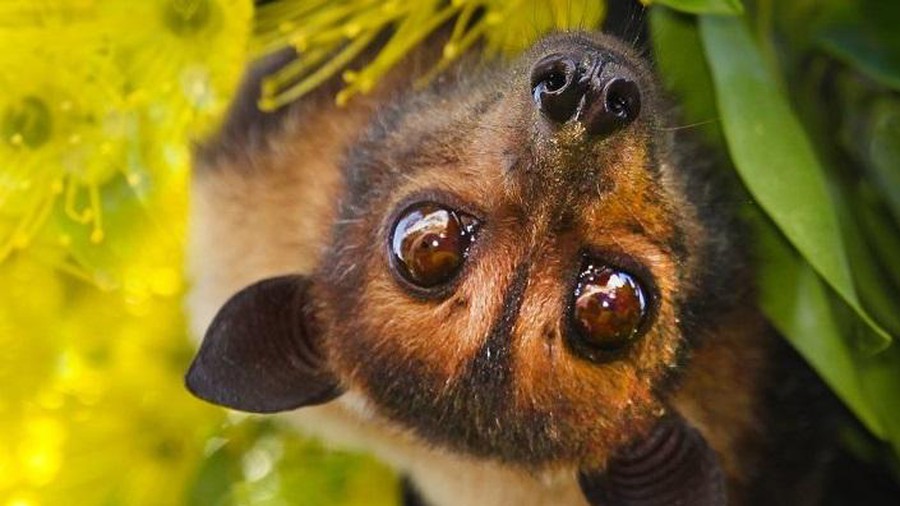New virus discovered in bats that can infect humans like Covid-19
The research was led by virologist Shi Zhengli, who has been dubbed the "bat man" for his outstanding contributions to the study of coronaviruses in this species.
The new virus, named HKU5-CoV-2, belongs to the HKU5 branch, which was first discovered in Japanese bats in Hong Kong. It belongs to the Merbecovirus group, which includes the virus that causes Middle East Respiratory Syndrome (MERS).
According to a publication in the journal Cell a few days ago, scientists have isolated and identified this new variant as having the ability to bind to the ACE2 receptor not only in bats but also in humans and many other mammals.

An individual bat can carry the virus to humans. Photo: Nature
Experiments have shown that HKU5-CoV-2 can infect human cells as well as artificial tissues (simulating the respiratory and digestive systems). This raises concerns about the risk of transmission from bats to humans, either through direct transmission or through an intermediate host. In particular, the ability to associate with many other animal species increases the risk of widespread spread.
However, scientists stress that the risk of an outbreak from this virus remains low. Although the HKU5-CoV-2 virus is more adapted to the human ACE2 receptor than the previous variant, its infectious efficiency is still much lower than that of SARS-CoV-2.
The study also found that the Merbecovirus group currently includes four distinct viruses: MERS, two found in bats, and one found in hedgehogs. Of these, HKU5-CoV-2 is considered to have the ability to infect multiple species, but its ability to interact effectively with human cells remains limited.
Shi Zhengli, a renowned scientist at the Wuhan Institute of Virology, has faced controversy over the origins of Covid-19. Some theories suggest that SARS-CoV-2 may have originated from a leak at a Wuhan laboratory, but Shi has dismissed the claim. While there is no consensus on the origin of Covid-19, many studies suggest that the virus may have originated in bats and spread to humans through an intermediate host.
You should read it
- Coronavirus updates: States extend lockdowns as federal social distancing guidelines pushed to April 30
- Coronavirus treatments: Chloroquine, vaccines and the drugs fighting COVID-19
- The young man drones take his dog for a walk to avoid Covid-19
- #BuildforCOVID19: Facebook, Microsoft, TikTok and other tech firms partner with WHO for coronavirus hackathon
- How to Care for Animals During the Coronavirus Outbreak
- Coronavirus unemployment: Everything you need to know about payments, applying and more
- YouTube will throttle coronavirus 5G conspiracy videos
- 77-year-old fined for playing Pokemon Go amid Spain's coronavirus lockdown
May be interested
- Distinguishing common types of batteries on the market today
 batteries are an indispensable source of energy in modern life, providing power for many devices from tv remotes, watches, to phones, laptops... depending on the purpose of use, there are many different types of batteries on the market in terms of size, chemical composition and reusability. this article will help you better understand the common types of batteries today and how to distinguish them.
batteries are an indispensable source of energy in modern life, providing power for many devices from tv remotes, watches, to phones, laptops... depending on the purpose of use, there are many different types of batteries on the market in terms of size, chemical composition and reusability. this article will help you better understand the common types of batteries today and how to distinguish them. - Is the death clock really able to accurately predict human lifespan?
 a free website called death clock uses ai to predict a user's lifespan based on their daily habits.
a free website called death clock uses ai to predict a user's lifespan based on their daily habits. - Asteroid 2024 YR4's risk of colliding with Earth is increasing
 in december 2024, scientists discovered an asteroid named 2024 yr4 using a telescope in chile.
in december 2024, scientists discovered an asteroid named 2024 yr4 using a telescope in chile. - Shocking discovery from Hubble: Giant space target with 9 swirls
 the hubble telescope continues to capture a masterpiece from the vast universe, this time a 'target' with many giant concentric circles.
the hubble telescope continues to capture a masterpiece from the vast universe, this time a 'target' with many giant concentric circles. - 'Herbig-Haro' Super Object Revealed: A New World Appears
 the james webb space telescope has captured a spectacular image of the ghostly herbig-haro object hh 30, where new planets are about to be born.
the james webb space telescope has captured a spectacular image of the ghostly herbig-haro object hh 30, where new planets are about to be born. - The iPhone SE 4 could look like one of the best-looking iPhones yet
 apple may soon introduce the fourth-generation iphone se, a product that promises to be a breakthrough for the company's smartphone line.
apple may soon introduce the fourth-generation iphone se, a product that promises to be a breakthrough for the company's smartphone line.






 Why did bats survive carrying deadly virus?
Why did bats survive carrying deadly virus? Scientists have discovered six new strains of corona virus in bat populations in Myanmar
Scientists have discovered six new strains of corona virus in bat populations in Myanmar Prestigious research completely rejects the conspiracy theory that Covid-19 is a 'born from the laboratory' biological weapon.
Prestigious research completely rejects the conspiracy theory that Covid-19 is a 'born from the laboratory' biological weapon. Can SARS-CoV-2 virus attach to shoes and infect people around them?
Can SARS-CoV-2 virus attach to shoes and infect people around them? How does Covid-19 infect lung cells? Why is it so dangerous?
How does Covid-19 infect lung cells? Why is it so dangerous?